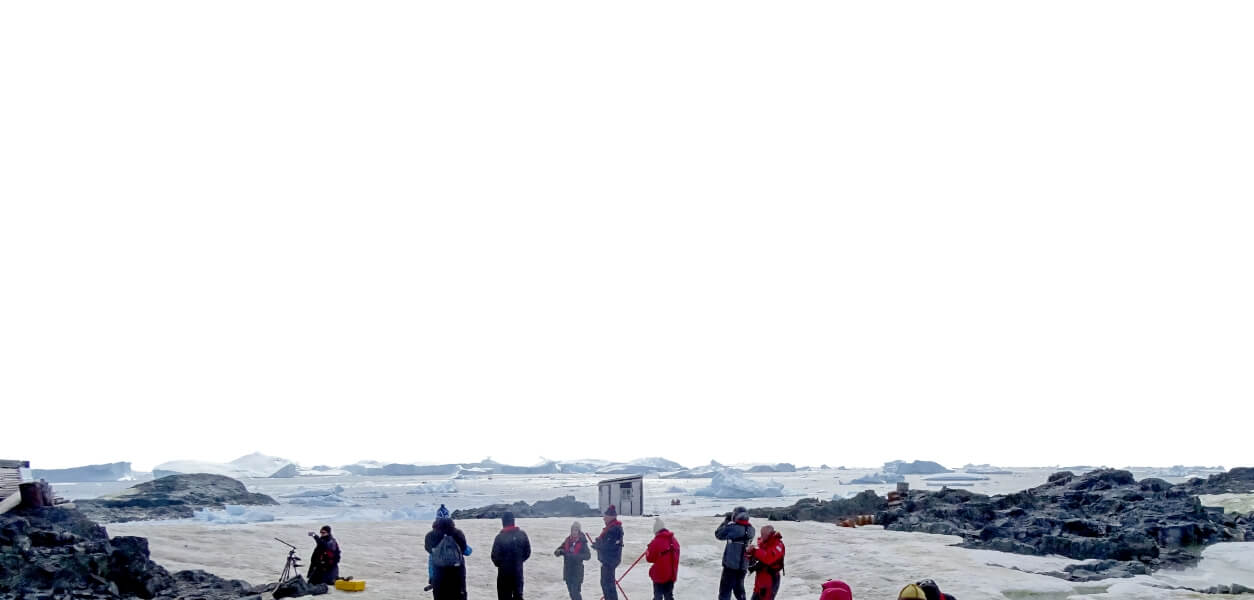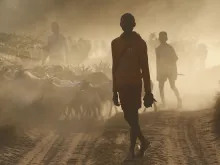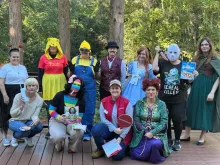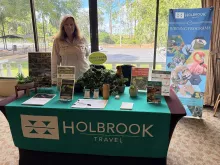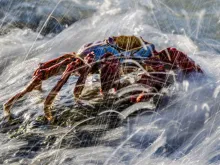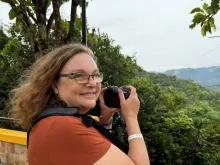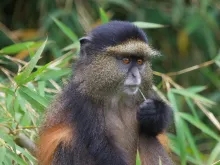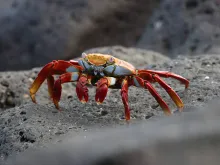Monday
Kia Ora (hello and welcome) Archmere group!
Adele, our guide (Aidan Callaghan) and I met the 14 students and two teachers this morning. Luck was on our side as we walked to our very nice 29-passenger coach that fortunately was parked under cover because the moment we got to the bus and met Richard, our driver, a squall passed through with heavy rain and wind. There is a “Southerly” coming through the North Island today so we headed south for Rotorua driving through some rain and strong winds, arriving about 3 hours later. Intermittent rain and sun greeted us in this town of steaming geysers. But the sun came out as we arrived at the Polynesian Pools, a spa with several mineral baths and varying temperatures ranging from 38 to 42 degrees Celsius. The sulfur smell and slick feeling on your skin was not a deterrent to the therapeutic soak. It was a great way to relax after a long flight!
 Next we made our way to Te Puia, a Maori cultural experience where we learned about their spiritual beliefs, how they came to settle around these natural hot springs, and carving and weaving schools. The geyser erupted as as we gazed from afar sitting on hot rocks, which felt great in the chilly wind! The rain passed and it turned out to be a lovely afternoon.
This evening we were treated to a performance of dancing and singing and then a hangi, a dinner where the food is cooked in the ground, in which meat and vegetables are somewhat smoked and steamed at the same time. The Maori village is located atop steam vents with boiling mud and a cold stream running through it. They use the geothermal energy to cook and heat their homes.
Next we made our way to Te Puia, a Maori cultural experience where we learned about their spiritual beliefs, how they came to settle around these natural hot springs, and carving and weaving schools. The geyser erupted as as we gazed from afar sitting on hot rocks, which felt great in the chilly wind! The rain passed and it turned out to be a lovely afternoon.
This evening we were treated to a performance of dancing and singing and then a hangi, a dinner where the food is cooked in the ground, in which meat and vegetables are somewhat smoked and steamed at the same time. The Maori village is located atop steam vents with boiling mud and a cold stream running through it. They use the geothermal energy to cook and heat their homes.
 About 9 p.m. we returned to our hostel. This is a very affordable option when traveling. These are self-catering set ups with a public kitchen, utensils, dishes and cookware—you bring your own food. Adele and Aidan had stocked us up with food and drinks before leaving Auckland. What fun! The rooms are Spartan-style. The kids shared adjoining bathrooms, but ours quarters were quite comfortable with private baths.
Tuesday
After breakfast and clean up we headed off to Huka Falls, a narrow gorge at the end of Lake Taupo, New Zealand’s largest lake. This is the beginning of New Zealand’s longest river, the Waikato. Amazing how much water is moving through there, enough to fill five Olympic sized swimming pools every MINUTE!
We got back on the bus and continued south, skirting the huge Lake Taupo and then taking the “Desert Road," which bisects three national parks. To the west we saw Mount Tongariro, a classic snow-covered cone-shaped volcano that is flanked by two other impressive peaks.
About 9 p.m. we returned to our hostel. This is a very affordable option when traveling. These are self-catering set ups with a public kitchen, utensils, dishes and cookware—you bring your own food. Adele and Aidan had stocked us up with food and drinks before leaving Auckland. What fun! The rooms are Spartan-style. The kids shared adjoining bathrooms, but ours quarters were quite comfortable with private baths.
Tuesday
After breakfast and clean up we headed off to Huka Falls, a narrow gorge at the end of Lake Taupo, New Zealand’s largest lake. This is the beginning of New Zealand’s longest river, the Waikato. Amazing how much water is moving through there, enough to fill five Olympic sized swimming pools every MINUTE!
We got back on the bus and continued south, skirting the huge Lake Taupo and then taking the “Desert Road," which bisects three national parks. To the west we saw Mount Tongariro, a classic snow-covered cone-shaped volcano that is flanked by two other impressive peaks.
 We continued to travel through sheep farms and dairies until we stopped for lunch in small-town park. Around 3:30 p.m. we arrived in Wellington, the capital city, after traveling a short distance right next to the Tasman Sea.
Our visit to Te Papa, the national museum right on Oriental Bay, was both enlightening and fascinating. Te Papa is a very interactive museum with an abundance of information on natural occurrences such as earthquakes and volcanic eruptions, which are part of this young country’s history, in addition to the natural history. They even have a rainforest set up outside where Trish and I heard the most melodious bird singing. It turned out it to be a tui, a bird that has recovered from near extinction. We were surprised to see its black plumage with two white feathers that look somewhat like earrings hanging down next to its beak. The variety of sounds it made was unbelievable!
We continued to travel through sheep farms and dairies until we stopped for lunch in small-town park. Around 3:30 p.m. we arrived in Wellington, the capital city, after traveling a short distance right next to the Tasman Sea.
Our visit to Te Papa, the national museum right on Oriental Bay, was both enlightening and fascinating. Te Papa is a very interactive museum with an abundance of information on natural occurrences such as earthquakes and volcanic eruptions, which are part of this young country’s history, in addition to the natural history. They even have a rainforest set up outside where Trish and I heard the most melodious bird singing. It turned out it to be a tui, a bird that has recovered from near extinction. We were surprised to see its black plumage with two white feathers that look somewhat like earrings hanging down next to its beak. The variety of sounds it made was unbelievable!
 Next we made our way to Te Puia, a Maori cultural experience where we learned about their spiritual beliefs, how they came to settle around these natural hot springs, and carving and weaving schools. The geyser erupted as as we gazed from afar sitting on hot rocks, which felt great in the chilly wind! The rain passed and it turned out to be a lovely afternoon.
This evening we were treated to a performance of dancing and singing and then a hangi, a dinner where the food is cooked in the ground, in which meat and vegetables are somewhat smoked and steamed at the same time. The Maori village is located atop steam vents with boiling mud and a cold stream running through it. They use the geothermal energy to cook and heat their homes.
Next we made our way to Te Puia, a Maori cultural experience where we learned about their spiritual beliefs, how they came to settle around these natural hot springs, and carving and weaving schools. The geyser erupted as as we gazed from afar sitting on hot rocks, which felt great in the chilly wind! The rain passed and it turned out to be a lovely afternoon.
This evening we were treated to a performance of dancing and singing and then a hangi, a dinner where the food is cooked in the ground, in which meat and vegetables are somewhat smoked and steamed at the same time. The Maori village is located atop steam vents with boiling mud and a cold stream running through it. They use the geothermal energy to cook and heat their homes.
 About 9 p.m. we returned to our hostel. This is a very affordable option when traveling. These are self-catering set ups with a public kitchen, utensils, dishes and cookware—you bring your own food. Adele and Aidan had stocked us up with food and drinks before leaving Auckland. What fun! The rooms are Spartan-style. The kids shared adjoining bathrooms, but ours quarters were quite comfortable with private baths.
Tuesday
After breakfast and clean up we headed off to Huka Falls, a narrow gorge at the end of Lake Taupo, New Zealand’s largest lake. This is the beginning of New Zealand’s longest river, the Waikato. Amazing how much water is moving through there, enough to fill five Olympic sized swimming pools every MINUTE!
We got back on the bus and continued south, skirting the huge Lake Taupo and then taking the “Desert Road," which bisects three national parks. To the west we saw Mount Tongariro, a classic snow-covered cone-shaped volcano that is flanked by two other impressive peaks.
About 9 p.m. we returned to our hostel. This is a very affordable option when traveling. These are self-catering set ups with a public kitchen, utensils, dishes and cookware—you bring your own food. Adele and Aidan had stocked us up with food and drinks before leaving Auckland. What fun! The rooms are Spartan-style. The kids shared adjoining bathrooms, but ours quarters were quite comfortable with private baths.
Tuesday
After breakfast and clean up we headed off to Huka Falls, a narrow gorge at the end of Lake Taupo, New Zealand’s largest lake. This is the beginning of New Zealand’s longest river, the Waikato. Amazing how much water is moving through there, enough to fill five Olympic sized swimming pools every MINUTE!
We got back on the bus and continued south, skirting the huge Lake Taupo and then taking the “Desert Road," which bisects three national parks. To the west we saw Mount Tongariro, a classic snow-covered cone-shaped volcano that is flanked by two other impressive peaks.
 We continued to travel through sheep farms and dairies until we stopped for lunch in small-town park. Around 3:30 p.m. we arrived in Wellington, the capital city, after traveling a short distance right next to the Tasman Sea.
Our visit to Te Papa, the national museum right on Oriental Bay, was both enlightening and fascinating. Te Papa is a very interactive museum with an abundance of information on natural occurrences such as earthquakes and volcanic eruptions, which are part of this young country’s history, in addition to the natural history. They even have a rainforest set up outside where Trish and I heard the most melodious bird singing. It turned out it to be a tui, a bird that has recovered from near extinction. We were surprised to see its black plumage with two white feathers that look somewhat like earrings hanging down next to its beak. The variety of sounds it made was unbelievable!
We continued to travel through sheep farms and dairies until we stopped for lunch in small-town park. Around 3:30 p.m. we arrived in Wellington, the capital city, after traveling a short distance right next to the Tasman Sea.
Our visit to Te Papa, the national museum right on Oriental Bay, was both enlightening and fascinating. Te Papa is a very interactive museum with an abundance of information on natural occurrences such as earthquakes and volcanic eruptions, which are part of this young country’s history, in addition to the natural history. They even have a rainforest set up outside where Trish and I heard the most melodious bird singing. It turned out it to be a tui, a bird that has recovered from near extinction. We were surprised to see its black plumage with two white feathers that look somewhat like earrings hanging down next to its beak. The variety of sounds it made was unbelievable!
Wellington reminds me a bit of Cape Town; it is quite hilly and a has a large port, and the wind blows a lot here.
Gas prices here are the same as they are throughout the country, a consistent $2.18 per liter—that’s over $8.00 per gallon. Every station is the same, there does not seem to be competition on gas prices.
We are boarding the ferry from Wellington to Picton in less than an hour, more later!



